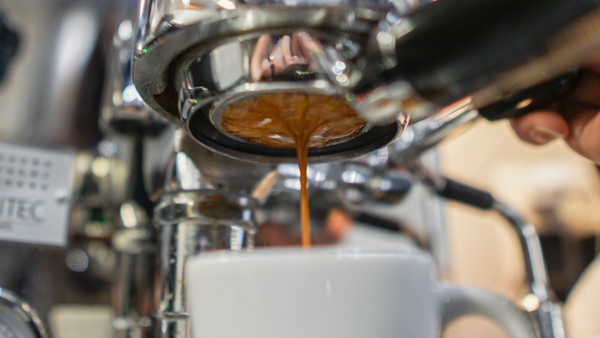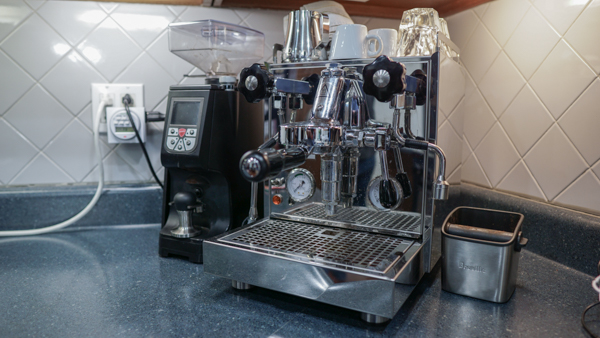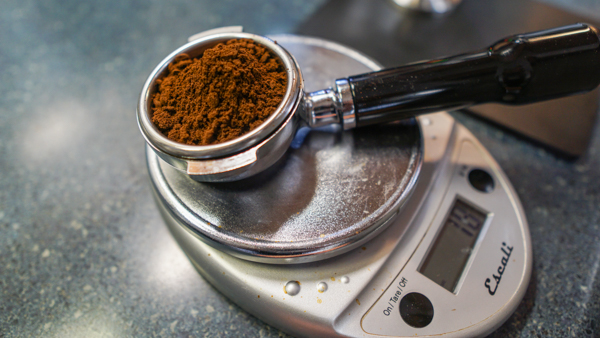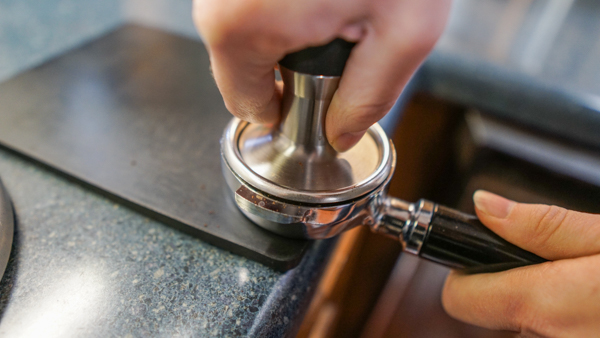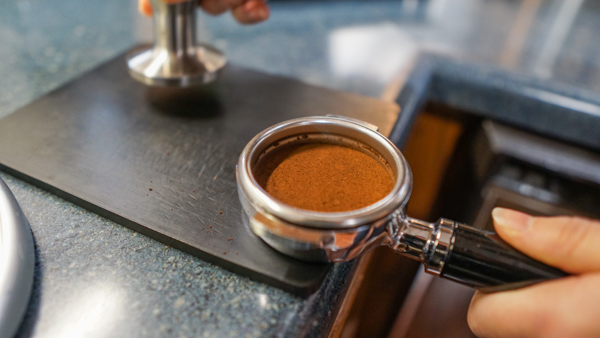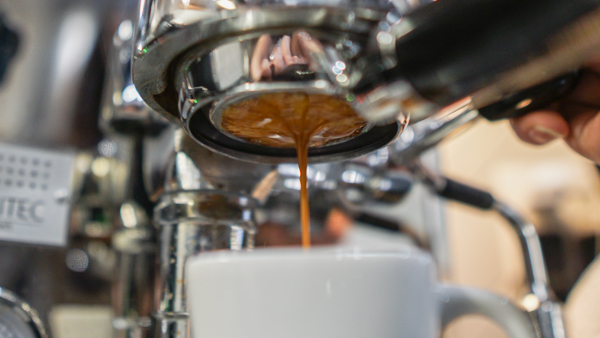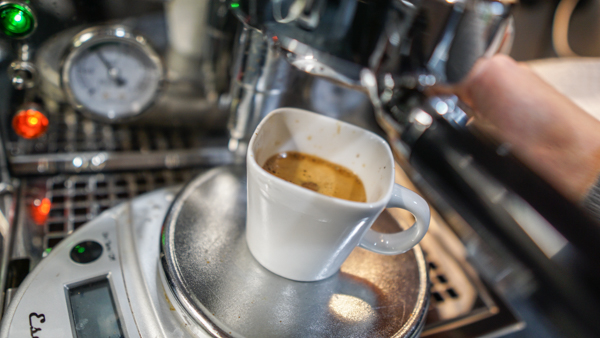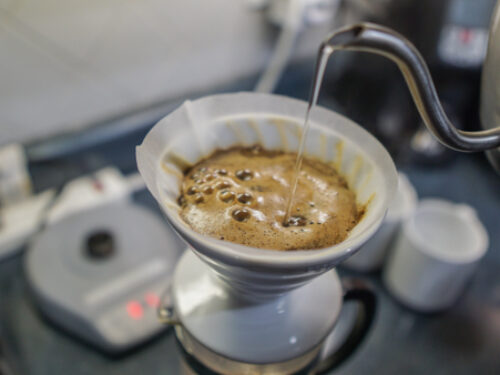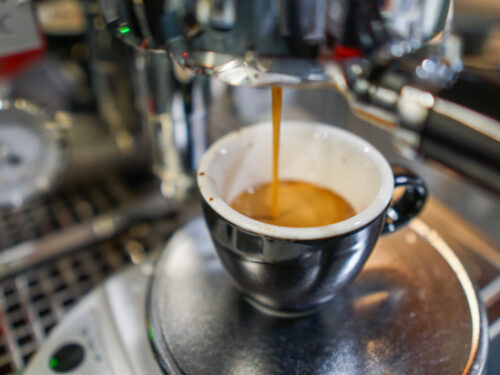Disclaimers: Our site uses demographic data, email opt-ins, display advertising, and affiliate links. Please check out our Terms and Conditions for more information.
Espresso is one of the most fundamental and versatile types of coffee. Espresso shots can be enjoyed on their own, diluted with water to make Americanos, topped with steamed milk to make drinks ranging from macchiatos to lattes, and so much more. But espresso is also one of the most difficult coffee brewing techniques to perfect, as the equipment used to make it is more complex and the shot quality is more sensitive to brewing parameters than other types of brewing techniques.
In this guide, I wanted to share my process for making the best espresso at home, including what you'll need to pull delicious shots in no time and subtle brewing details that are often overlooked.
The Equipment You'll Need for Espresso
To make the best espresso at home, you'll need the following equipment:
- An Espresso Machine (we have a Profitec Pro 500)
- An Espresso Burr Grinder
- A kitchen scale
- Espresso cups
- Cafiza (cleaner)
Additionally, there are some items you may want to purchase that could help improve your shots and to prepare drinks with steamed milk:
- A bottomless portafilter (click here for the portafilter for the Profitec Pro 500)*
- A heavier tamper*
- A tamping mat
- A milk frothing cup
- Cortado cups
- Latte cups
- A programmable electrical timer (to turn the machine on/off automatically each day)
- Knock box
*Note: Portafilters and tampers are often tied to specific machines and may not be interchangeable. The linked units should be compatible with the Profitec Pro 500 (our machine), but you may need to check compatibility for your unit's portafilter size.
What Espresso Ratio Works Best?
The best espresso coffee ratio we have found so far is the following (for a single serving using a double portafilter basket):
- Roast: Any, but we prefer light to medium roasts
- Coffee: 17 g per serving
- Water: 34 g per serving (2:1 water-to-grounds if a different mass of coffee is required for your specific portafilter)
- Contact Time: 25 to 30 seconds
- Grind: Fine- to be dialed in with each new coffee
Espresso is unlike other brewing methods – the parameter space for what tastes good is much narrower than for, say, pourover. Even just a slight change in grind size that's visually undetectable can greatly affect the extraction. Also, additional factors other than grind, water temperature, and contact time come into play during extraction such as how uniformly the coffee is distributed in your portafilter (i.e. how well you did distributing and tamping the coffee). Finally, the best brewing conditions can change quite a bit from one coffee to another, and even from one day to the next.
As such, you will have to optimize your grind for a given bean in order to ensure the best final product. While our guides can help assist with what to look for when getting started, there is no substitute for hands-on experience pulling shots.
Espresso Recipe
To make the best espresso at home, we recommend the following steps for a double portafilter basket. This recipe is broken up into multiple stages.
Preparation
- Ensure that your espresso machine is turned on and has come to its default temperature and pressure set points (we let ours warm up for at least an hour). Now is also a good time to pre-heat your shot glasses, mugs, etc.
- Top off your water reservoir if it is not connected to a dedicated water line to ensure the machine does not shut off mid-pull.
- Prepare your scale, shot glasses/mugs, and all other equipment in advance so you can pull your shot immediately after grinding.
Grinding Espresso
- Place your portafilter on your scale and tare your scale.
- Grind 17 g of coffee directly into your portafilter.
- Distribute the coffee grounds evenly in the portafilter. There are a million different techniques to do this – I would argue it's more important to pick one and do it consistently rather than pick a specific technique. My technique is to hold the portafilter with my left hand and lightly knock the side of it with my right index finger. While doing this, I tilt the portafilter in the direction that I want the grounds to distribute to (e.g. tilt down and to the left if I want more grounds to move to the bottom left).
- Tap the portafilter on the tamping mat three times with medium firmness in order to further distribute the grounds.
- Place the portafilter on the tamping mat and push down onto the grounds with about 20 lbs of pressure. Basically, push firmly but not terribly hard (probably not as hard as you think) – act like you're kneading a bread dough.
- Lock the portafilter into your espresso machine.
Pulling a Shot of Espresso
- Place your coffee cup on your kitchen scale and tare it.
- Pull your shot per your espresso machine's steps until you reach your target shot weight (34 g or twice your ground coffee weight).
- Ideally it will take 25-35 seconds to achieve the desired shot weight.
As mentioned above, there are numerous factors that go into pulling a quality shot. While it's tempting to try and change multiple factors at once, especially when you're starting out, the best thing to do is change one variable at a time. The easiest place to start is grind size: if your shot pulls too quickly, adjust your grind finer. If it takes too long, adjust your grind coarser. Starting with minor grind size changes is typically best (0.5-1 notches on a Eureka Atom, for example) for a few reasons. It helps you not overshoot your goal, and it also helps you avoid clogging your grinder (something we discovered our Eureka Atom is prone to do when making large grind adjustments quickly).
Even if your shots don't meet the above parameters right away, go ahead and try them – tasting less than perfect shots is all part of the learning experience.
Once you can pull consistent shots that meet the above parameters, then you can start thinking more critically about the taste of the shot. Of course, once you start playing around with other variables, you'll likely have to re-evaluate and re-calibrate your grind size again. It's all part of the science and fun of espresso!
Some Espresso Making Theory and Science
Out of all of the brewing methods out there, espresso is among the more interesting. The reason for this is because you add the element of pressure into the brewing process. Here, near-boiling water is forced through your coffee grounds at high pressure. This results in a rapid extraction with very minimal contact time across the coffee grounds.
Because of this rapid extraction time, espresso shots require a much finer and more consistent grind than other coffee brewing methods we've featured on this site. Blade grinders definitely can't meet these requirements and cheaper burr grinders most likely won't either. It's often said that the quality of your burr grinder is more important than the quality of your espresso machine. We will definitely delve into this topic more in future articles.
The reason we have placed so much emphasis on your grind and tamping practices in this guide is all about the uniformity of the coffee bed in your portafilter. As espresso is a high-pressure extraction, water is going to follow the path of least resistance through the coffee grounds. Any unevenness caused by poor distribution/tamping or non-uniform grind size will contribute to channeling and will cause the water to bypass most of the grounds and come out too quickly. If the coffee is too coarse, the void space between grains may result in channeling as well. Conversely, if the coffee is too fine, the brewing time will be longer and result in an over-extracted shot.
Many espresso machines fix the pressure within the unit and allow for a controllable temperature for one extra variable to play with. When learning to pull shots, though, using the default temperature setting and only adjusting the grind size is a good place to start – and it's how I started out. However, the temperature is something we look forward to playing with on our espresso machine in the future. As we test and optimize we'll update this guide accordingly!
How do you prepare your espresso at home? Comment below to share any tips you have picked up along the way!

